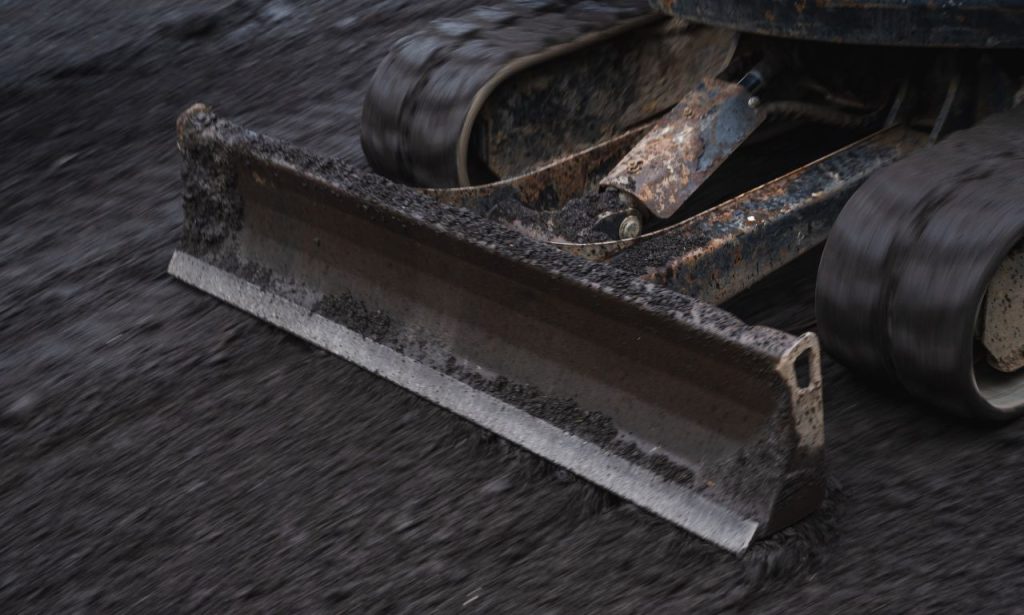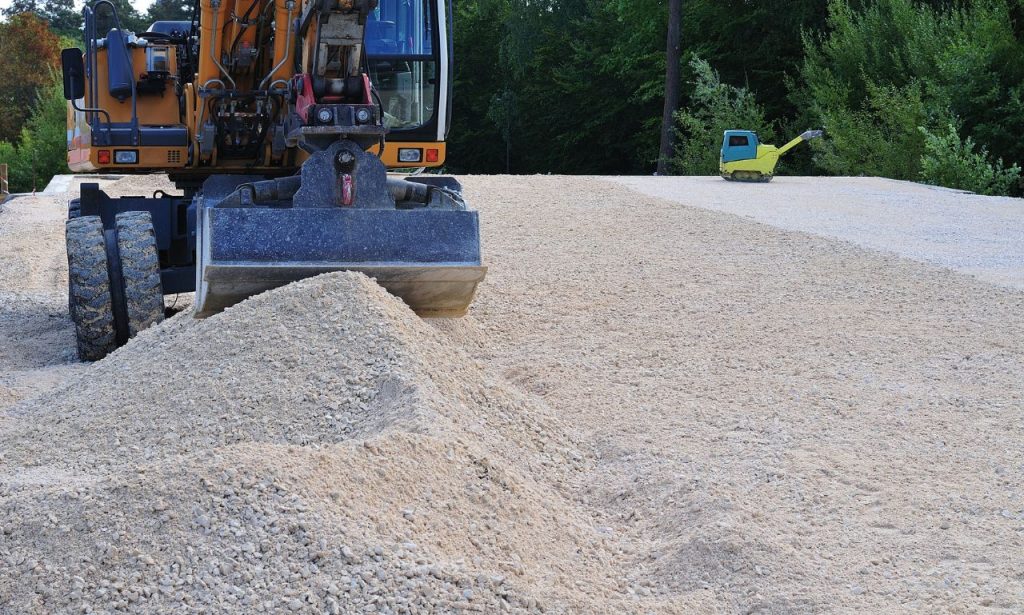Imagine a freshly built home, standing tall and proud. But something feels amiss. The ground around it is uneven, water pools near the foundation, and the landscaping looks haphazard. This, dear reader, is the critical difference final grading in construction can make. It’s the often-overlooked hero that transforms a construction site into a functional, safe, and aesthetically pleasing landscape.
The Importance of Final Grading
While the intricacies of foundation pouring or roof installation might steal the spotlight, final grading in construction plays a silent yet vital role. It’s the meticulous process of adjusting the slope and elevation of the soil around a newly constructed building, ensuring a seamless transition between the structure and its surroundings. Think of it as the finishing touch, the artist’s signature that elevates a house to a home.
But the significance of this final step extends far beyond aesthetics. Let’s delve into the multifaceted importance of final grading in construction:
Ensuring Proper Drainage

Water, as life-giving as it is, can be a building’s worst enemy when allowed to accumulate around its foundation. This is where final grading in construction steps in as a protector, a guardian against potential water damage. By carefully sculpting the terrain to direct water away from the structure and towards designated drainage systems, final grading prevents:
- Foundation Issues: A waterlogged foundation weakens over time, leading to cracks, settling, and costly repairs.
- Basement Flooding: Improper grading can turn basements into unwanted swimming pools, damaging belongings and fostering mold growth.
- Landscaping Damage: Pooling water can drown plants, erode topsoil, and create muddy patches, ruining your landscaping efforts.
Enhancing Aesthetics
Beyond its functional role, final grading in construction is also the artist in the construction crew. It’s about creating a visually appealing landscape that complements the structure and enhances its curb appeal. This involves:
- Creating Smooth Transitions: Final grading eliminates abrupt changes in elevation, ensuring a gentle slope from the structure to the surrounding yard.
- Accommodating Landscaping Features: It lays the groundwork for patios, walkways, driveways, and gardens, integrating them seamlessly into the overall design.
- Boosting Property Value: A well-graded lot is visually appealing and speaks volumes about the property’s care and attention to detail, ultimately increasing its market value.
The Final Grading Process
Understanding the “why” behind final grading in construction is essential, but grasping the “how” is equally crucial. Let’s break down the process into manageable steps:
Site Preparation
Before the actual grading begins, meticulous preparation is key:
- Site Analysis: A thorough assessment of the existing topography, soil conditions, drainage patterns, and local regulations is conducted.
- Stakeout: The desired elevations and slopes are marked using stakes and string lines, providing a visual guide for the grading work.
- Clearing and Grubbing: Vegetation, rocks, debris, and any obstructions are removed from the area to be graded.
Tools and Equipment
Achieving those precise slopes and elevations requires specialized tools and equipment:
- Laser Level: This high-tech tool projects a laser beam to establish accurate elevations and ensure consistent slopes.
- Motor Grader: A heavy-duty machine with a long blade used for moving and spreading large quantities of soil.
- Bulldozer: A powerful machine used for pushing and excavating soil, particularly in areas with significant elevation changes.
- Compactor: This tool compresses the soil to the desired density, ensuring a stable and level surface.
- Hand Tools: Shovels, rakes, and hand tampers are used for fine-tuning and achieving precise grading in tight spaces.
Final Grading vs. Other Types
The world of grading in construction encompasses various techniques, each serving a specific purpose. Let’s differentiate final grading in construction from its close relatives:
Cut and Fill Grading
As the name suggests, this technique involves excavating soil from high areas (cut) and using it to fill low areas (fill). It’s often employed in large-scale projects or areas with significant elevation changes, aiming to create a level platform for construction.
Final grading vs. Cut and Fill: While both involve moving and shaping soil, final grading in construction is a more refined process that occurs after the structure is built. It focuses on the area immediately surrounding the building, ensuring proper drainage and a seamless transition to the surrounding landscape.
Rough Grading
This initial grading phase occurs early in the construction process, typically after the site has been cleared and excavated. It establishes the rough elevations and slopes needed for the foundation and other structural elements.
Final grading vs. Rough Grading: Think of rough grading as the sketch, while final grading in construction is the finished painting. Rough grading sets the stage, while final grading perfects the details, ensuring proper drainage, aesthetics, and long-term stability.
Precise Grading
This technique, as the name implies, demands a high level of accuracy and attention to detail. It’s often employed in specialized applications like golf courses, sports fields, and areas requiring specific drainage patterns.
Final grading vs. Precise Grading: While both strive for a refined finish, final grading in construction focuses on the functional aspects of drainage and slope around a building. Precise grading, on the other hand, prioritizes specific design requirements and tolerances, often for recreational or aesthetic purposes.
Compliance with Regulations
Construction, like most things in life, operates within a framework of rules and regulations. Final grading in construction is no exception, as it directly impacts drainage, erosion control, and the overall safety of the property.
1. Local Zoning Laws
Local municipalities often have specific regulations regarding:
- Maximum allowable slopes: These regulations ensure proper drainage and prevent erosion.
- Drainage easements: These designated areas allow for the flow of water across properties, preventing flooding and drainage issues.
- Setback requirements: These rules dictate the minimum distance a structure must be from property lines, impacting the grading plan.
2. Building Codes
Building codes, often adopted at the state or national level, provide guidelines for various aspects of construction, including grading:
- Drainage requirements: Codes specify minimum slopes, drainage system components, and methods for directing water away from foundations.
- Erosion control measures: Regulations may mandate the use of erosion control blankets, retaining walls, or other measures to prevent soil erosion during and after construction.
- Soil compaction standards: Codes may specify the required compaction levels for different soil types to ensure a stable base for the structure and surrounding areas.
3. Environmental Considerations

Beyond local and building codes, environmental regulations play a crucial role in shaping final grading in construction practices:
- Stormwater management: Regulations aim to minimize the impact of construction on water quality by controlling runoff and erosion.
- Wetland protection: Grading practices must adhere to strict guidelines to avoid disturbing or impacting sensitive wetland areas.
- Erosion and sediment control: Measures like silt fences, sediment basins, and vegetated buffers are often required to prevent soil erosion and protect water quality during and after construction.
Conclusion
Final grading in construction is far more than just moving dirt around. It’s a meticulous process that demands careful planning, skilled execution, and a deep understanding of drainage principles, soil mechanics, and local regulations. It’s the unsung hero that safeguards your investment, enhances your property’s beauty, and ensures your home stands strong for years to come. So, the next time you admire a beautifully landscaped property, remember the crucial role of final grading in construction – the silent force shaping the landscape we call home.
ALSO READ: Where Is The Best Place To Buy A Ranch?
FAQs
Improper final grading can lead to a cascade of problems, including foundation damage, basement flooding, landscaping issues, and even structural instability. It’s crucial to address any grading issues promptly to prevent costly repairs and headaches down the road.
While tackling smaller grading projects yourself is possible, it’s generally recommended to hire an experienced grading contractor, especially for larger or more complex projects. They have the expertise, equipment, and knowledge of local regulations to ensure the job is done correctly.
The cost of final grading can vary widely depending on factors like the size of the lot, the amount of soil to be moved, the complexity of the grading plan, and local labor rates. It’s always best to obtain multiple quotes from reputable grading contractors to get an accurate estimate for your specific project.
The duration of the final grading process depends on the project’s size and complexity. Smaller residential projects might take a few days, while larger commercial projects could take several weeks or even months to complete.
Once the final grading is complete, regular maintenance is essential to ensure its long-term effectiveness. This includes:
Inspecting and cleaning gutters and downspouts regularly: This prevents clogs and ensures water is directed away from the foundation.
Monitoring the grading around the foundation: Look for signs of erosion, settling, or changes in slope, and address them promptly.
Adding soil or mulch as needed: This helps maintain the desired slope and prevents erosion.




